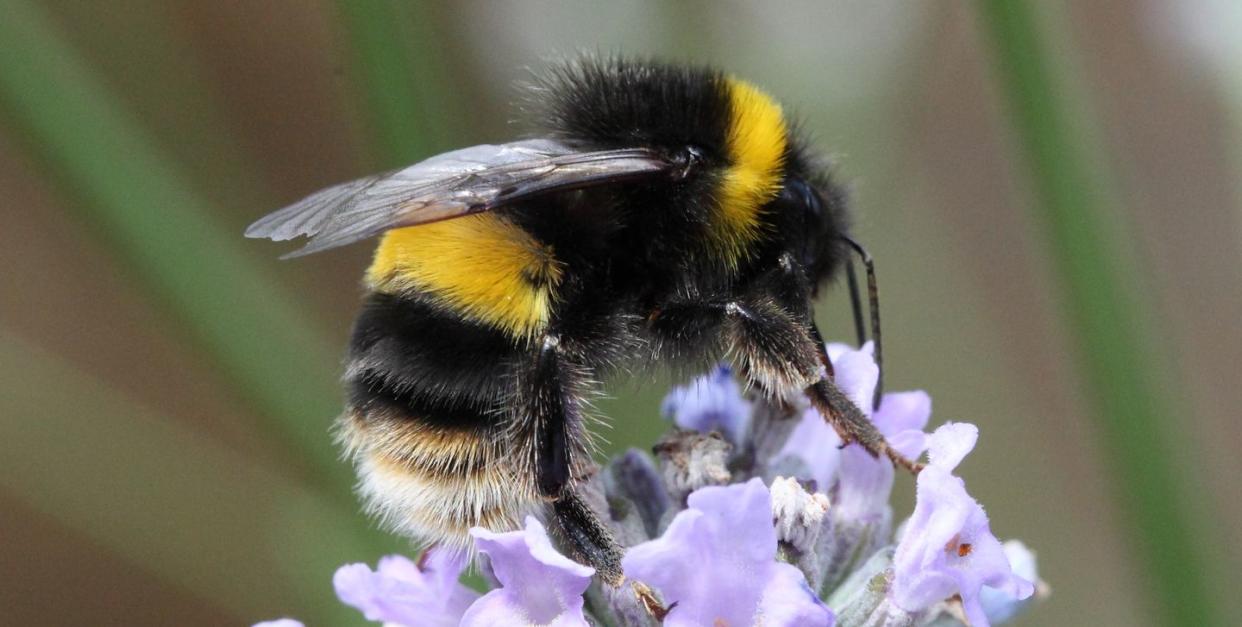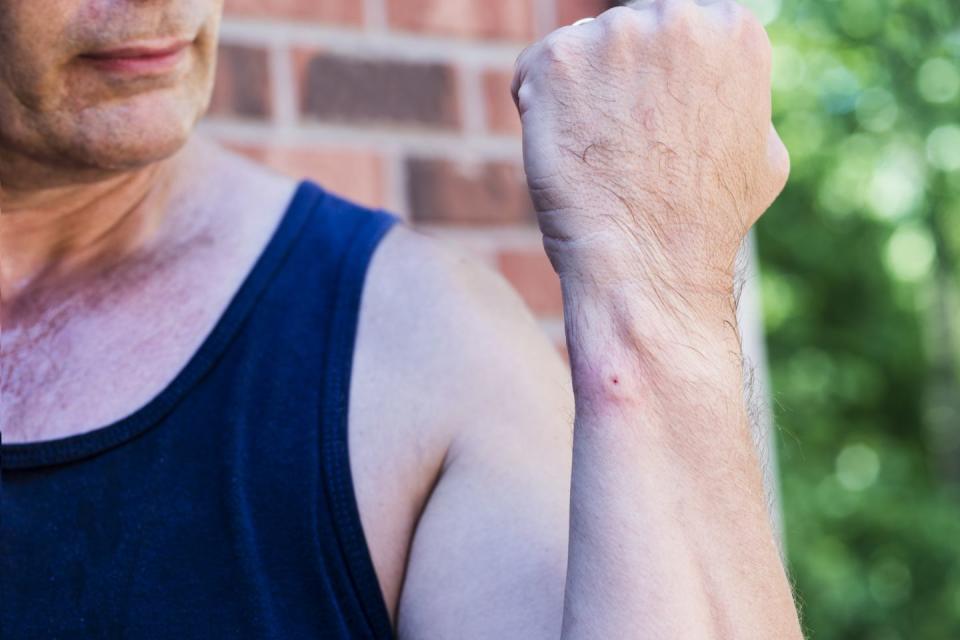Bee and wasp sting treatment tips

If you've been stung by a bee, wasp, a hornet or any type of insect, it can be extremely painful and may cause quite a shock. The good news is most insect stings are perfectly harmless and while the severity of the reaction varies from person to person, you should recover within a day or two.
Dr Roger Henderson offers his expert tips on how to treat bee and wasp stings:
What is a bee and wasp sting?
Both bee and wasp stings cause a sudden sharp pain followed by itching, redness and swelling of the skin around the area. Most insect bites are not serious and can be safely treated at home, but occasionally they can become infected or cause a severe allergic reaction. If you experience a serious reaction, breathing difficulties, or swelling of the face and mouth then you should seek urgent medical assistance.
Wasp sting symptoms
Like bees, wasps are equipped with a stinger for self-defence and when a wasp stings a person, venom is transmitted into the sting. This causes a reaction and the typical pain and irritation that occurs after a wasp sting.
If you are not allergic to a wasp sting, the usual symptoms are relatively short-lived and typically include:
A sharp or burning feeling at the sting site
Redness at the area
Itching
Swelling ( a raised 'welt' at the site)

Wasp sting severe symptoms
The most severe reaction to a wasp or bee sting is called an anaphylactic reaction and is a medical emergency requiring urgent attention, initially with adrenaline injections. Some 3 per cent of adults and almost 1 per cent of children have insect sting allergies to varying degrees.) Some, or all of the following symptoms can occur in anaphylaxis:
Severe swelling of the face, lips and throat, sometimes with breathing difficulties such as wheezing or gasping for breath
Dizziness and fainting
Severe itching
Nausea, vomiting and diarrhoea
A sudden drop in blood pressure and a weak or very fast pulse rate
If you have a history of anaphylaxis you should always carry an adrenaline auto-injector pen kit - ask your GP about being given a prescription for this.
Bee sting symptoms
Bee stings cause almost identical symptoms to a wasp sting, and the risks and symptoms of a severe anaphylactic reaction are the same. However, unlike wasps - who can sting someone repeatedly - bees leave their stinger embedded in the person they have stung.
How to treat bee and wasp stings
Follow these tips to treat insect stings:
1. Avoid rubbing the area
After being strung, try to keep still and avoid rubbing the area around the string, as this can increase the spread of venom into the bloodstream. This is more important with bee strings, as the sting is often left in the skin. Keep calm and walk away slowly from any wasps or bees in the area.
2. Remove the sting carefully
The best way to remove a bee sting is by scraping off a sting with a bank card or with fingernails, rather than trying to pick it out using the fingers or tweezers, as this may cause more venom to be injected.
3. Take antihistamine
Take an antihistamines to help reduce the swelling or itching. Use an antihistamine that works quickly, like acrivistine or chlorphenamine and avoid using things like vinegar or calamine lotion as these do not neutralise any venom deep under the skin.
4. Use hydrocortisone cream
Hydrocortisone cream may also help to reduce the irritation of the sting. If there is any pain associated with the bite then a painkiller such as ibuprofen may be used.
5. Try a cold compress
An ice pack or cold compress may also help to reduce the swelling and irritation of a sting.
6. Keep an eye out for infection
Time is the best medicine with insect bites and sting, but if after a day or two you notice any discharge or pus then it may be a sign that the sting is infected and you should see your doctor.
7. Do not burst blisters
Stay with the person who has been stung to watch for any severe allergic reaction or anaphylaxis. Do not be tempted to burst any blisters that may develop as this can increase the risk of infection.
🐝 To help reduce the risk of being stung, if you are in an area known to be inhabited by wasps or bees, try to avoid wearing bright or flower-print clothing, and avoid using floral scents or perfumes. If possible, avoid open-toed shoes, and loose clothing as this can trap flying insects such as wasps and bees.
Last updated: 21-06-2021
You Might Also Like


